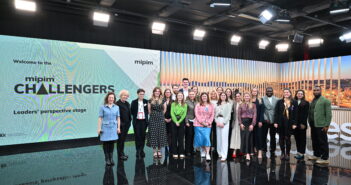Proptech being prominent in urban planning is crucial for taking towns and cities into the sci-fi-like future that so many people today dream of them becoming like. Proptech can play a critical role in a public-private partnership (PPP) scheme in which bureaucracy is streamlined, where private institutions and contractors have a dominant role, and individual citizens have their voices heard and ideas acknowledged in the planning process.
The PPP model for urban planning was instituted by visionary Oliver Porter, a retired AT&T engineer. His little book The Contract City details the concepts behind and the overwhelming success of his first PPP city in 2005, the 100,000-resident Sandy Springs of the state of Georgia. One of the crucial elements that Porter emphasised in creating Sandy Springs was the use of unfettered technology.
Much of today’s proptech and its application to urban planning seems to be developing along “Porteresque” lines.
For instance, there’s the UK’s Urban Intelligence, which brings together “vast professional experience in both the built environment and technology sectors” to help with complex urban planning projects. In December 2016, Urban Intelligence became a licensed commercial partner of Ordnance Survey (OS), Britain’s mapping agency. The idea behind that partnership is to cross over boundaries in planning between government, the property sector, engineers, and so on.
Singapore’s Ta.le Architects created its Urban Redevelopment Authority (URA) Digital Planning Lab in 2013 to utilise “digital tools and Big Data to enhance URA’s ability to plan the city” in a better way. The Lab itself was designed around the concept of being a “high-tech, interactive green office”. Collaborative spaces with semi-enclosed pods featuring touch-screen displays, urban farming space, and an open space for conceptualising known as “The Propeller” are all included in the Lab. URA is enthusiastic about bringing in AR and VR for use in urban designing in the future.
Germany’s virtualcitySYSTEMS, a subsidiary of the CADFEM Group, offers a suite of 3D geodata for the creation of 3D city and landscape models, which in general are seen as integral in the process of creating better, future-generation cities. The company’s team comprises geomatics engineers, city and landscape planners, cartographers, and software systems technicians.
France’s Dassault Systèmes seeks to partner with urban planners to create “responsive” cities through the use of its digital planning technology and its 3DEXPERIENCity project. These responsive cities are designed, and redesigned, to face the reality that with an increasing human population comes more crowding in cities, most of which exist now were never formally structured to accommodate all of the people now flocking to live in them. New and smarter buildings as well as superior planning that allow for a more efficient use of resources including water, land, space, and energy are necessary.
While used to varying degrees in various places and cultures, the PPP is on the leading edge of transforming urban planning. Proptech is making that possible.
Top photo © PeopleImages/GettyImages



